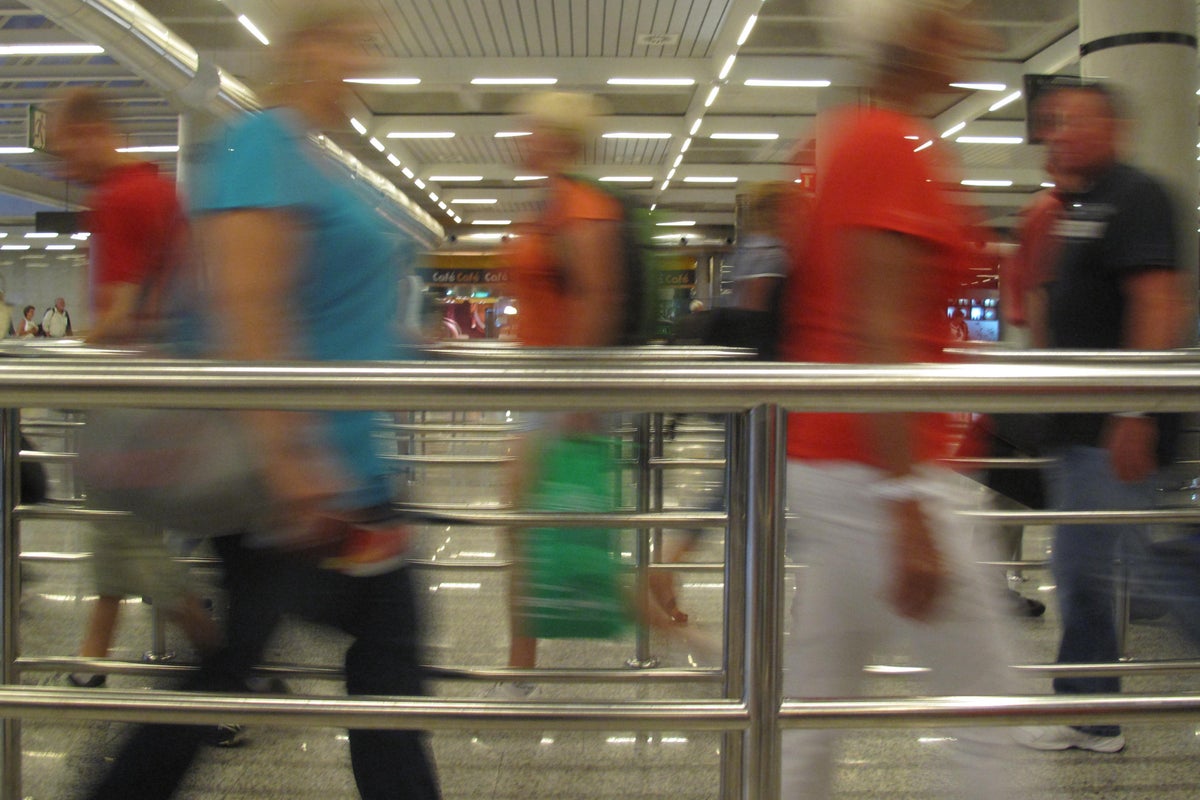The first fatal accident anywhere in the world involving a passenger jet in 2024 happened on Christmas Day.
Thirty-eight passengers and crew died when Azerbaijan Airlines flight J2-8243 from the airline’s hub at Baku to Grozny, the capital of Russia‘s Chechnya, crashed short of Aktau airport in Kazakhstan; 29 survived.
“We will never forget the beloved people we lost in the crash of the Embraer 190 aircraft,” said Azerbaijan Airlines in a statement posted online on Boxing Day.
A survivor of the crash who is now in hospital, Subhonkul Rakhimov, told Reuters he “thought the plane was going to fall apart” and that it was acting “drunk” after a loud bang erupted. Mr Rakhimov began reciting prayers and preparing for the end after the loud noise, he said on a video link from his hospital bed.
Russian air defences are alleged to have downed the plane, four sources with knowledge of early findings in Azerbaijan’s investigation told Reuters news agency. It comes after the pro-government AnewZ news station cited Azerbaijan officials as saying shrapnel from a Russian missile was responsible.
They allege the stricken aircraft was then denied permission to land at nearby airports in Russia and urged to head across the Caspian Sea to Aktau.
The Azerbaijani news service said: “Presumably, this recommendation was given for one purpose: for the plane to fall into the Caspian Sea, all witnesses would be killed and the plane would sink.”
On Friday, Azerbaijan Airlines said preliminary investigations showed the plane had experienced “external and technical interference” before the crash.
A military expert told Euronews that it is difficult to assume anything other than an air-defence missile being the cause without “serious evidence”.
But Russia has played down the accusations, with its aviation watchdog suggesting an early investigation had found the pilot decided to change landing site after “a collision with birds”. Kremlin spokesperson Dmitry Peskov said it would be wrong to speculate on “hypotheses” before the investigation is complete.
If Russian air defence action is found to have caused the crash, shoot-downs will be an ever more common cause of fatalities in aviation accidents.
At a time when air safety is improving globally, military action against civil aircraft is an increasing concern.
These are the key questions and answers.
What do we know about the flight?
Azerbaijan Airlines flight J2-8243, operated with an Embraer 190 passenger jet, took off from Baku airport at 7.55am local time on 25 December 2024. On board: 62 passengers, three cabin crew and two pilots. Their nationalities:
- Azerbaijan 42
- Russia 16
- Kazakhstan 6
- Kyrgyzstan 3
Their destination was Grozny, a distance of 301 miles from Baku.
The exact course of the flight is difficult to ascertain from publicly available sources because of GPS interference, which is prevalent in areas close to Russian borders. But the plane crossed the Caspian Sea from west to east on a highly erratic course with wide variations in altitude.
Once on the east side of the Caspian, above Kazakh territory, the plane flew in a figure of eight and crashed two miles short of Aktau airport – which is where the pilots were hoping to land. The flight had lasted two hours and 15 minutes.
The crash site is 270 miles from the original destination, Grozny, and 240 miles from the starting point, Baku.
The aircraft broke up on impact. Survivors were in the rear part of the cabin, which remained largely intact and did not catch fire.
What about GPS interference?
Global Positioning System (GPS) depends on signals received from several orbiting satellites. While the data normally give global coverage of location to within a few metres, nations involved in conflict can either spoof GPS signals, providing a false location, or jam the signals.
Both techniques prevent aircraft pilots from knowing their precise location by GPS. The practice also conceals aircraft locations from open-source aircraft trackers such as Flightradar24. This organisation has produced a map of GPS jamming locations, which include the Middle East, Russian borders, much of Ukraine and the northern Black Sea, and the Caspian Sea.
Analysis of a series of flight paths on flights to and from Grozny suggests that interference covers the region between the Dagestan coastal city of Makhachkala and the Chechen capital.
Why did the plane not land in Grozny as planned?
Various accounts have been given. They include fog, although evidence of the prevailing weather does not appear to support this. Others say that the airport was closed because of a Ukrainian drone attack, with planes diverted.
The only diverted flight on Christmas Day that The Independent has been able to identify is of the crash aircraft.
Russia’s aviation watchdog, Rosaviatsia, said heavy fog and a local alert regarding Ukrainian drones had forced the flight had rerouted from its original destination in Chechnya. It claimed other Russian airports were offered for the captain to land the plane, but he chose Kazakhstan’s Aktau.
The watchdog has offered support to the Kazakh and Azerbeijani investigations into the crash, it added.
What theories have emerged about the cause of the crash?
Photographs of the remains of the fuselage show many perforations consistent with an anti-aircraft missile attack.
Initially Russia claimed the aircraft had struck a flock of birds, which led to the crash. But according to Reuters news agency, four sources with knowledge of Azerbaijan’s investigation say the Russian Pantsir-S air-defence system was the cause of the crash.
One source told Reuters: “No one claims that it was done on purpose. However, taking into account the established facts, Baku expects the Russian side to confess to the shooting down of the Azerbaijani aircraft.”
The plane’s communications had been paralysed by electronic warfare systems on the approach to Grozny, the source added.
An account reported by pro-government AnewZ news station says a drone attack on Grozny was confirmed on Christmas Day morning, and that airspace should have been closed to civilian aircraft.
The report says: “Our flight was also not given permission to land at the airports in Makhachkala and Mineralnye Vody.
“The disoriented crew of the flight, which was subjected to air defence fire and electronic warfare systems, was recommended to land in the Kazakh city of Aktau.
“Presumably, this recommendation was given for one purpose: for the plane to fall into the Caspian Sea, all witnesses would be killed and the plane would sink.”
Military expert Yan Matveyev told Euronews that it is “very difficult to assume” that anything other than an anti-aircraft missile was behind the attack without “some serious evidence”.
“But overall, it looks like the tail section of the plane was damaged by some missile fragments, probably a Pantsir S-1 missile, or some anti-aircraft system with the same small missiles that carry a not very large warhead,” he added.
Mr Matveyev said Ukrainian drones had been flying over Chechnya at the time and it was possible the plane had been hit by Russia’s air defences.
Are accidental shoot-downs common?
Increasingly so, and often involving Russia and Ukraine. In October 2001, a Siberia Airlines plane from Tel Aviv to Novosibirsk was shot down over the Black Sea by a surface-to-air missile during a joint Russian-Ukrainian military exercise.
In July 2014 MH17, a Malaysia Airlines flight from Amsterdam to Kuala Lumpur, was shot down over rebel-held Ukraine. A Russian anti-aircraft system was deployed against the Boeing 777, killing all 298 on board.
In 2020, Iranian air defence personnel using a “misaligned threat detection system” shot down a Ukraine International Boeing 737 soon after departure from Tehran to Kyiv, costing the lives of all 176 on board.
What does the Kremlin say?
Very soon after the crash, Russia’s civil aviation regulation said preliminary information suggested the pilot had decided to make an emergency landing after a bird strike.
But a day later, a Kremlin spokesman, Dmitry Peskov, said: “It would be wrong to put forward any hypotheses before the investigation’s conclusions. We, of course, will not do this, and no one should do this. We need to wait until the investigation is completed.”
What other causes could there have been?
A wide spectrum of possibilities from a catastrophic failure of an aircraft system to a hijacking of some sort. Chechen separatists have, in the past, attacked Russian planes.
Source: independent.co.uk



